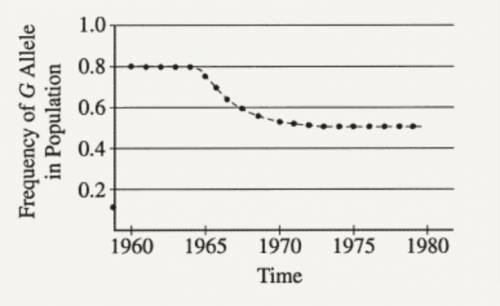
Biology, 19.04.2021 04:00 cadeedmiston
A moth's color is controlled by two alleles, G and g, at a single locus. G (gray) is dominant to g (white). A large population of moths was studied, and the frequency of the G allele in the population over time was documented, as shown in the figure below. In 1980 a random sample of 2,000 pupae was collected and moths were allowed to emerge. Assuming that the population was in Hardy-Weinberg equilibrium for the G locus, what percentage of the gray moths that emerged in 1980 was heterozygous? (The Answer is 67%, can you please explain what it's 67%? Thank you!)


Answers: 1


Another question on Biology


Biology, 22.06.2019 02:10
Draw the structure of dna nucleotide with adenine as nitrogenous base
Answers: 3

Biology, 22.06.2019 02:40
Lucia is walking barefoot in her yard. she accidentally steps on a nail. how will her nervous system work to generate a reaction? arrange the eventschronologically.
Answers: 1

Biology, 22.06.2019 12:00
Can a trait be both polygenic and have multiple alleles? explain why or why not.
Answers: 2
You know the right answer?
A moth's color is controlled by two alleles, G and g, at a single locus. G (gray) is dominant to g (...
Questions

History, 19.11.2019 06:31




Mathematics, 19.11.2019 06:31

Mathematics, 19.11.2019 06:31

Mathematics, 19.11.2019 06:31





History, 19.11.2019 06:31

History, 19.11.2019 06:31




Social Studies, 19.11.2019 06:31

History, 19.11.2019 06:31





